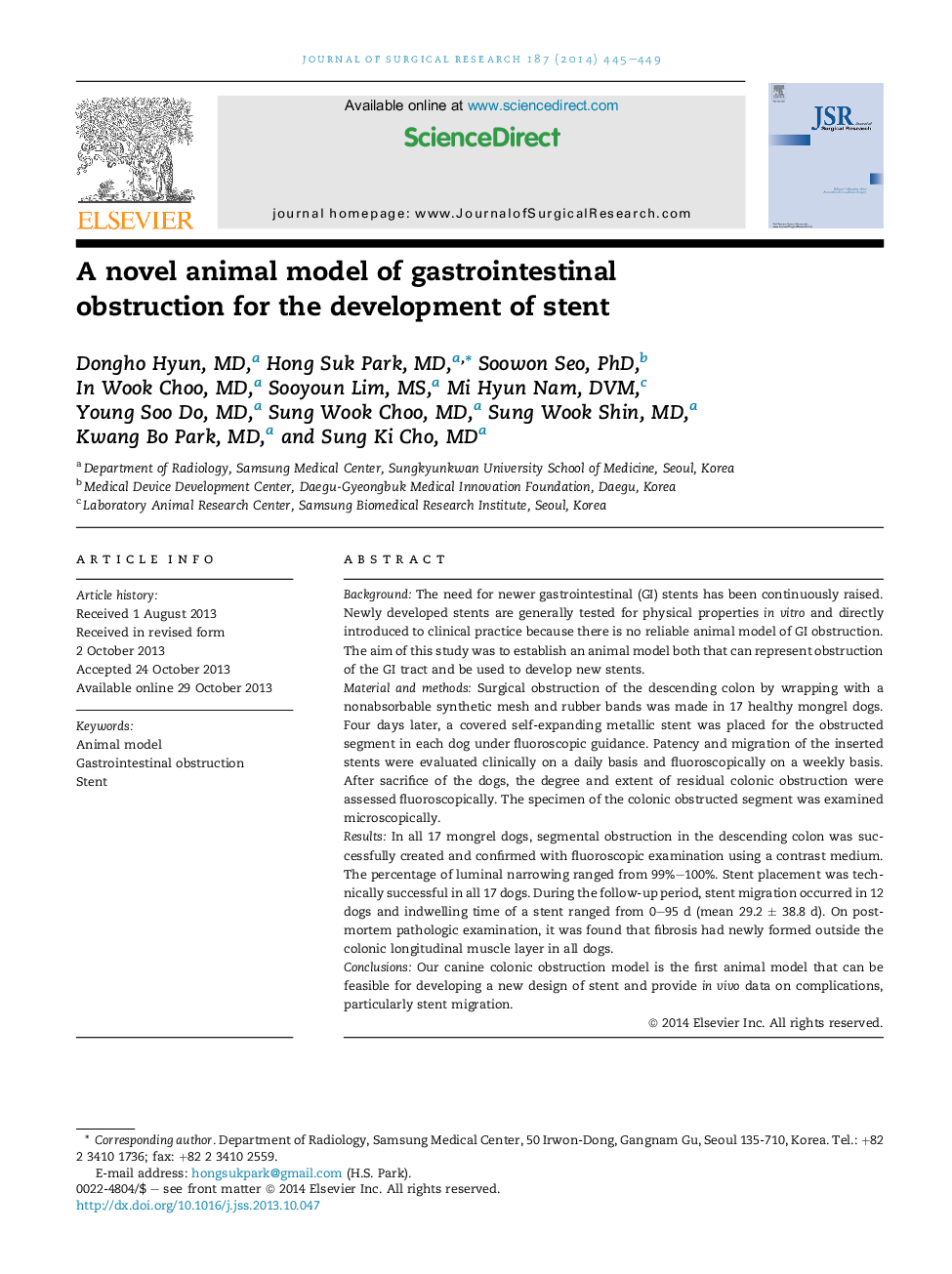| Article ID | Journal | Published Year | Pages | File Type |
|---|---|---|---|---|
| 4300413 | Journal of Surgical Research | 2014 | 5 Pages |
BackgroundThe need for newer gastrointestinal (GI) stents has been continuously raised. Newly developed stents are generally tested for physical properties in vitro and directly introduced to clinical practice because there is no reliable animal model of GI obstruction. The aim of this study was to establish an animal model both that can represent obstruction of the GI tract and be used to develop new stents.Material and methodsSurgical obstruction of the descending colon by wrapping with a nonabsorbable synthetic mesh and rubber bands was made in 17 healthy mongrel dogs. Four days later, a covered self-expanding metallic stent was placed for the obstructed segment in each dog under fluoroscopic guidance. Patency and migration of the inserted stents were evaluated clinically on a daily basis and fluoroscopically on a weekly basis. After sacrifice of the dogs, the degree and extent of residual colonic obstruction were assessed fluoroscopically. The specimen of the colonic obstructed segment was examined microscopically.ResultsIn all 17 mongrel dogs, segmental obstruction in the descending colon was successfully created and confirmed with fluoroscopic examination using a contrast medium. The percentage of luminal narrowing ranged from 99%–100%. Stent placement was technically successful in all 17 dogs. During the follow-up period, stent migration occurred in 12 dogs and indwelling time of a stent ranged from 0–95 d (mean 29.2 ± 38.8 d). On postmortem pathologic examination, it was found that fibrosis had newly formed outside the colonic longitudinal muscle layer in all dogs.ConclusionsOur canine colonic obstruction model is the first animal model that can be feasible for developing a new design of stent and provide in vivo data on complications, particularly stent migration.
